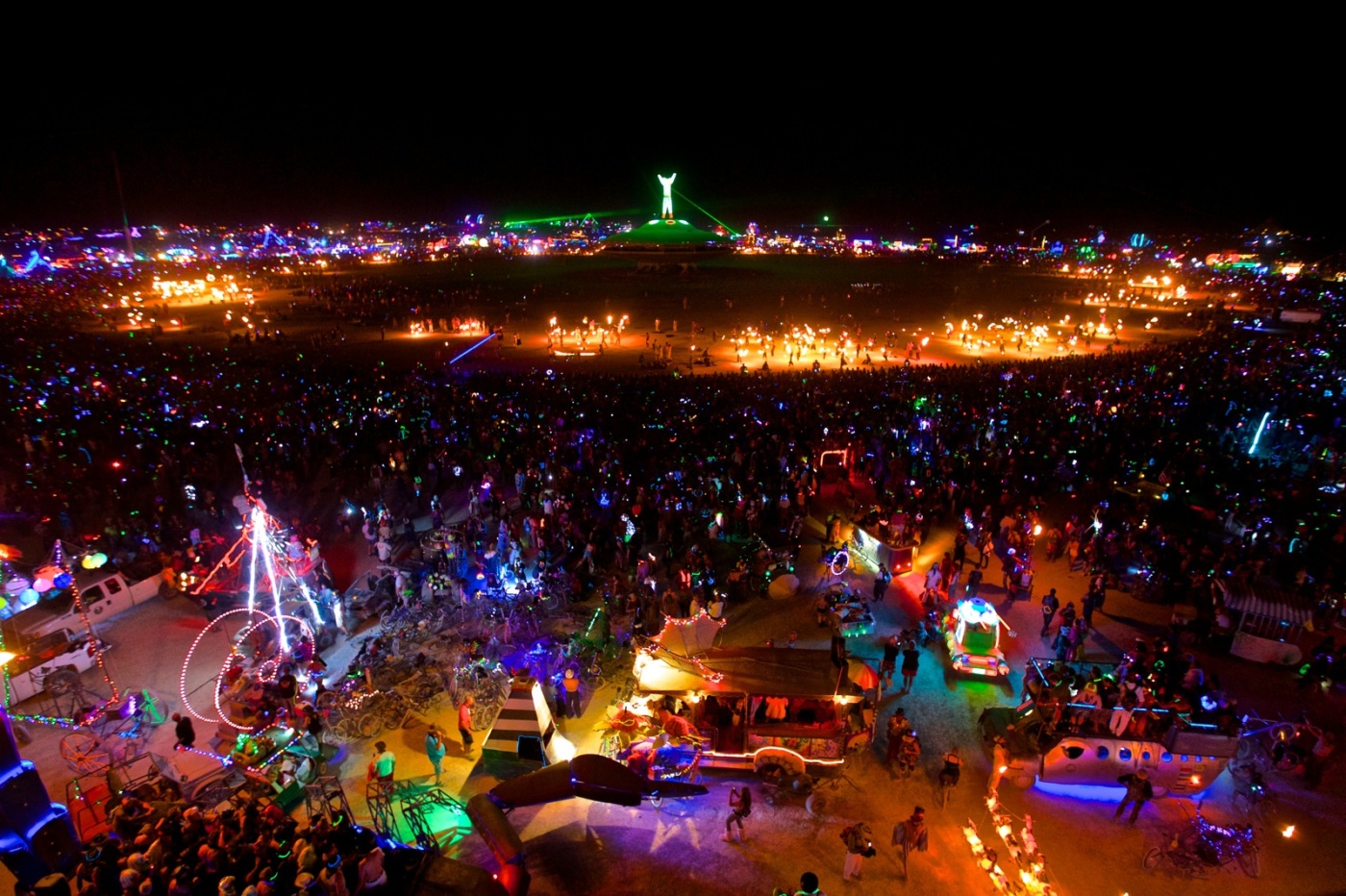How Collective Creativity Withstands Crises and Beyond
Some see August as time to jump into a new school year, while others spend the month preparing for the year’s premier experiment in inventive survival and radical self-expression:
Burning Man
The week-long celebration of imagination, engagement and independence annually takes place in the desert depths of temporarily established Black Rock City, Nevada. With more than 70,000 attendees converging this year alone, event organizers have deemed it the largest outdoor arts festival in North America.
Since the first was held in 1986, Burning Man has often been associated with danger, drugs and debauchery; however, plenty defend to the death the festival’s greater purpose to encourage creativity, self-reliance and other positive philosophies, as officially outlined in “The 10 Principles of Burning Man.”
That said, few special events take place without bumps along the way. The occasion’s rich history of colorful, yet checkered moments provide prime scenarios of crisis communication in action.
Among most obvious is its history of automobile accidents with tragic outcomes, both directly and indirectly tied to the event.
The inaugural incident took place in 1996 when a motorcyclist died in a wreck while riding back to his campsite. In 2003 an oncoming vehicle hit and killed a woman after she jumped off a moving car art installation. A pilot additionally died in a plane crash on the private Black Rock City airstrip the same year. More recently, a bus full of passengers en-route to the festival struck and killed another woman in 2014.

As a result, various restrictions and bans on driving within the festival have gone in and out of effect. Like any PR pro, event organizers have taken cues from bad as well as good experiences. Such misfortunes cannot be ignored, so careful consideration of how to best prevent similar cases from happening demonstrates responding in a responsible and compassionate manner.
The ticketing fiasco a few years back also serves as a lesson in problem assessment and solving through public feedback at its finest.
In 2012 organizers instated a specially developed lottery system after tickets sold out for the first time the previous year. With more than 80,000 applicants for the roughly 60,000 tickets available, prospective attendees were enraged about how distribution shook out.
Many believed scalpers made off with a significant amount of tickets through the lottery, so Burning Man’s Communications Director addressed the roaring backlash directly on the event’s official blog. They acknowledged the problem and the next year explained plans for the drastically restructured, tiered ticketing system.
Public sentiment characterized and primarily guided organizers’ course of corrective actions. Listening to your audience is essential and the most effective means by far to preserve mutually beneficial, 2-way communication.
Although thousands more unexpected festival go-ers comprised what was almost Burning Man’s latest PR crisis: the insect invasion of 2015. News of the bug infestation broke last week, leaving plenty of time for true insectiphobes to cancel their travel plans if so desired.
The situation, however, turned into a rare case of apparent self-correction. The bugs have reportedly left as quickly as they came, leaving no problems for attendees arriving this weekend.
In any case, when people deplore—don’t ignore. Crises will only escalate if they’re mishandled, much less disregarded.
Despite its extensive repertoire of disaster-dealing dance, Burning Man clearly abides by the ultimate PR creed: “If the public says you have a problem, you have a problem.”
But they sure know how to fix it.
(Featured image via garagelab.com)

Leave a comment